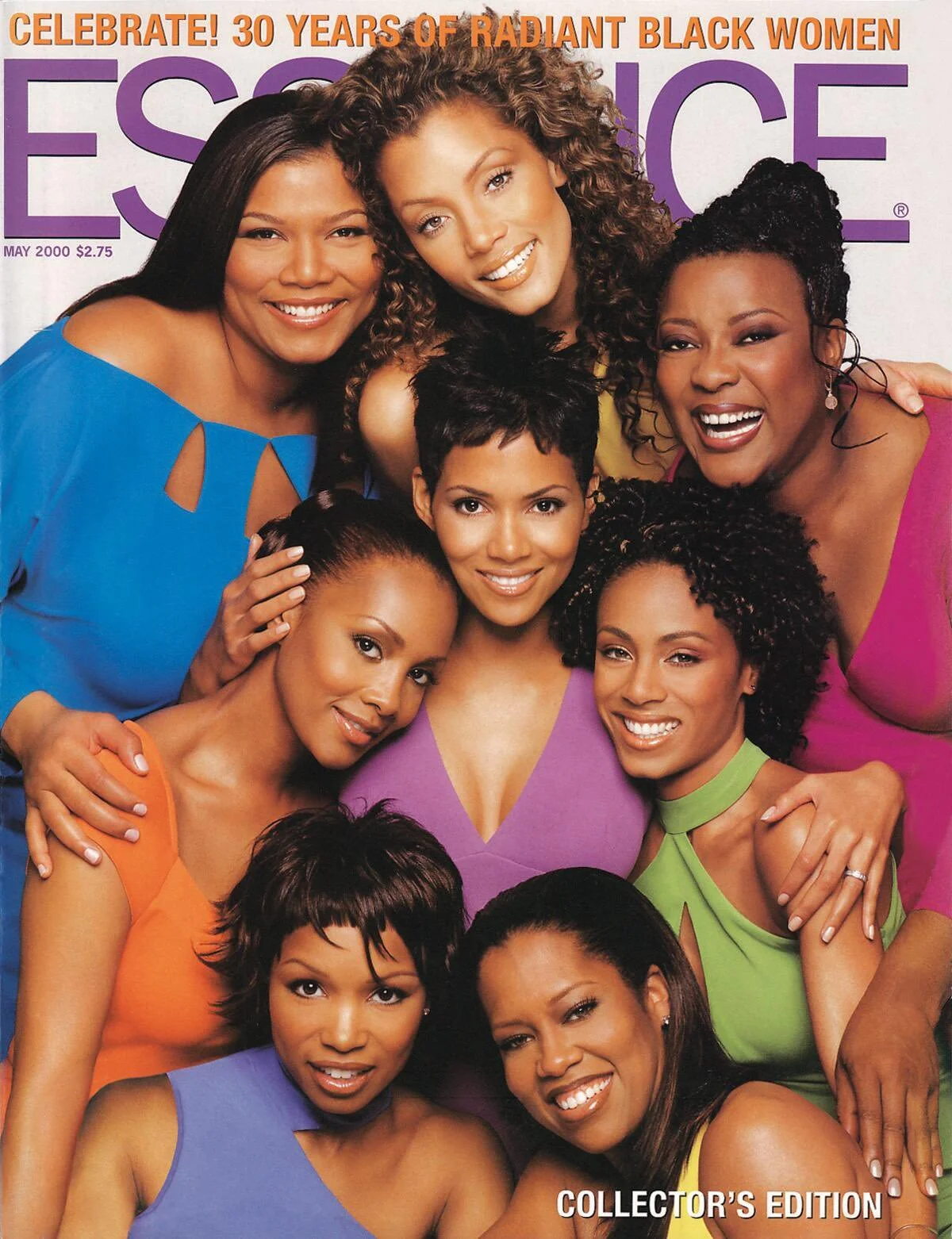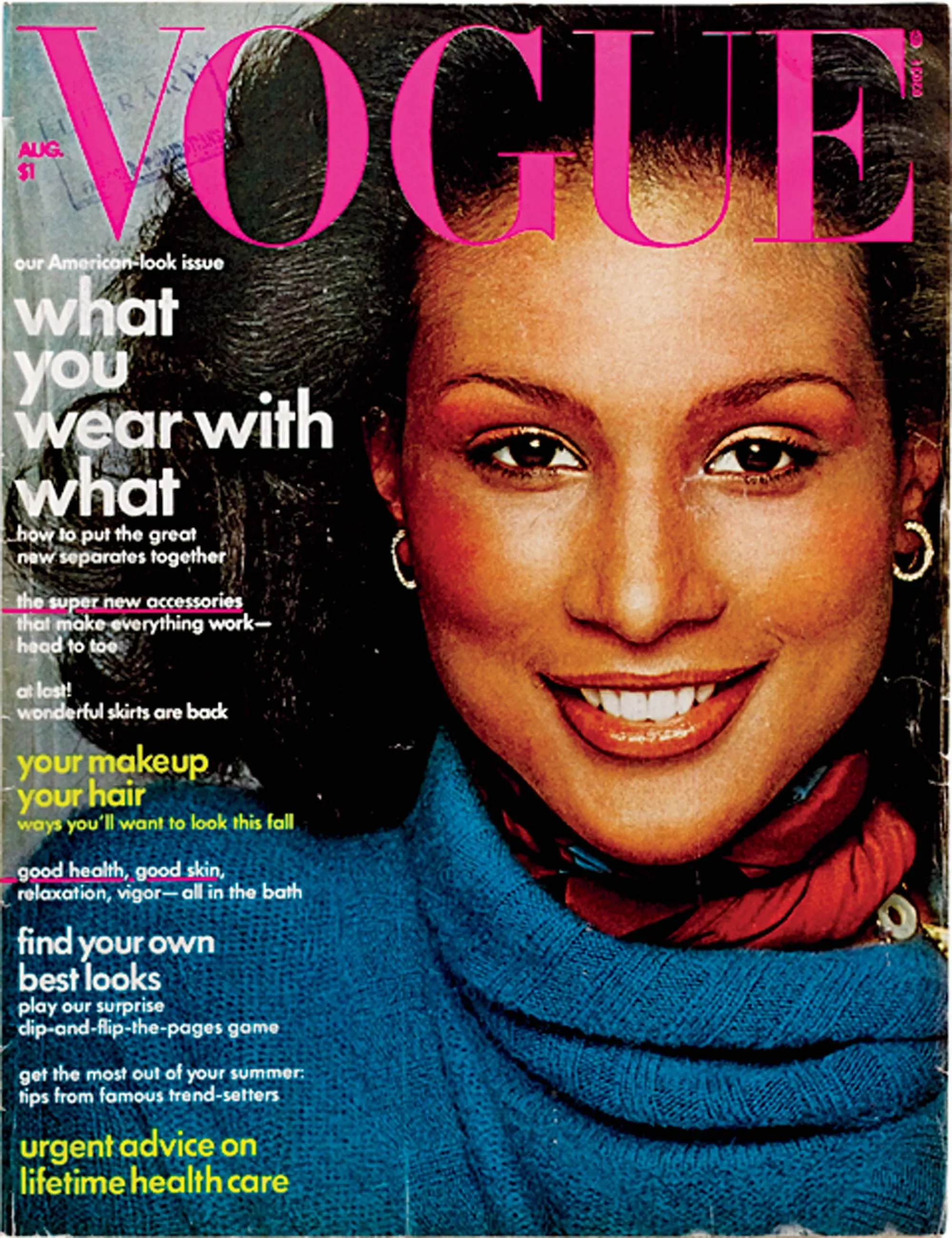Sacred Pages From my Mother's Living Room to Magazine Covers
A Story of Fashion, Survival, and Inheritance
In my mother’s house, magazines were never just magazines. Ebony, Jet, and Essence sat on the coffee table like sacred texts, sometimes even wrapped in plastic. My mom treated them like heirlooms. She taught me, without ever saying the words, that seeing Black women on those covers was something to be honored.
Those images told me our presence was worthy of being displayed, preserved, and celebrated.
Growing up in the ’90s and early 2000s, Vogue was the glossy dream. It was aspirational, untouchable — but it rarely reflected me. I didn’t see girls who looked like me in its pages. Vogue set a standard that was beautiful but distant, always just out of reach.
Essence, on the other hand, felt like home. One of the most important issues in my life was the May 2000 30th anniversary cover: Queen Latifah, Halle Berry, Regina King, Vivica A. Fox, Jada Pinkett Smith, Loretta Devine, Michael Michele, and Elise Neal, styled vibrantly by Angela Dean. I taped it to my wall. It wasn’t just decoration — it was a mirror. It showed me what Vogue never did: that Black women could be glamorous, powerful, and visible all at once.
Discovering Beverly Johnson
It wasn’t until after college that I learned Beverly Johnson had been the first Black woman on the cover of Vogue back in 1974. That revelation stunned me. How could I have grown up obsessed with Vogue and not know this? The absence wasn’t accidental. It was part of a system that erased our milestones from the narrative.
When I started pursuing fashion seriously in Atlanta, Beverly Johnson actually followed me on Twitter. It might sound small, but it mattered to me — proof that my voice in fashion was being heard.
Susan Taylor & Almost Moments
The year I was supposed to graduate from Clark Atlanta University, Susan Taylor, the legendary editor of Essence, was our class speaker. Meeting her would have been a dream come true. But I graduated a semester later and missed her.
It felt like one of those “almost” moments: so close to my dream, but not yet in it. Still, Susan Taylor’s presence at my school meant everything. She embodied what I wanted to become: a Black woman shaping culture through editorial power.
The No’s and the Fear
Every single door I tried to walk through in fashion editorial told me no. Internship after internship, email after email, the answer was always the same. After a while, I started to believe it. Fashion scared me. I didn’t like what I saw in the mirror — not just my reflection, but the reflection of an industry that didn’t seem built for someone like me. I didn’t think I was the person who could tell these stories.
Amy DuBois Barnett & Another No
And then, one night in Chicago, something happened. I was working at Nordstrom, barely making ends meet, and I went out to dinner with one of my best friends. At the restaurant — Batter & Berries, of all places — I looked up and saw Amy DuBois Barnett. Amy, who had been the editor-in-chief of Essence, one of the very women shaping the magazines that had shaped me. I couldn’t believe it. I introduced myself, probably too eagerly, and told her that fashion editorial was my dream. She was kind, she listened, she followed me on Twitter. For a moment, it felt like a door had cracked open.
But even after that, I gave up again. Fashion constantly told me no. Every time I thought I had found a way back in, the industry reminded me that my voice wasn’t the one it wanted. And so I walked away, convinced that maybe the dream had never belonged to me in the first place.
Coming Back to the Dream
But the truth is, the dream never really left. That night in Chicago stayed with me longer than I admitted at the time. Even when I convinced myself that fashion had no room for me, a seed had been planted — a reminder that I had something to say, even if the industry didn’t want to hear it yet.
It took years, and a lot of detours through retail, academia, and survival, before I finally understood that maybe the doors I was knocking on weren’t the only way in. Maybe fashion wasn’t waiting for me — maybe I had to build my own place inside of it.
That’s what The Overdressed Black Girl became: the yes I was never given, the space where I could finally tell the stories I once believed I couldn’t. Fashion scared me, but it also shaped me. And by coming back to it on my own terms, I realized that sometimes the dream isn’t something you chase down. Sometimes, the dream is something you create for yourself.
Why Covers Still Matter; fashion as inheritance
For me, magazine covers were never just glossy images. They were church hymns, hidden in the pews. They were my dreams, what helped me sleep at night . They told me I mattered when the world showed me otherwise
When you walk into my house today, you’ll still see covers on my walls. But they’re more than decoration they’re reminders of my mother, my grandmother, my aunts and the way they taught me to treat those pages as sacred. Many mothers pass down clothes or jewelry. My mother passed down something more sacred: magazines. She treated Ebony, Jet, and Essence the way the church treats hymns — songs of our beauty and survival, sung again and again so we would never forget the words.
Those pages moved through me like music. They were stories I carried even when I didn’t know I was carrying them, echoing in the background of my life. And just like in church, I can still hear the sound of one woman leading a hymn during the benediction, her voice rising above the quiet hums of everyone else. It wasn’t just a song — it was memory, it was testimony, it was proof.
It was our proof that we survived something. And with that survival, beauty came — captured on the covers, taped to our walls, laid carefully on the tables in our living rooms, and preserved as if they were scripture. That’s what those magazines felt like in my home.
And they remind me that fashion is part of that inheritance: a hymn carried forward, a way of seeing ourselves, celebrating ourselves, and passing the vision to whoever needs to hear it and see it next.
Even now, the magazines are still playing in the background the song of our beauty. The same song my mother taught me to hear, the one I’ll never stop listening for

